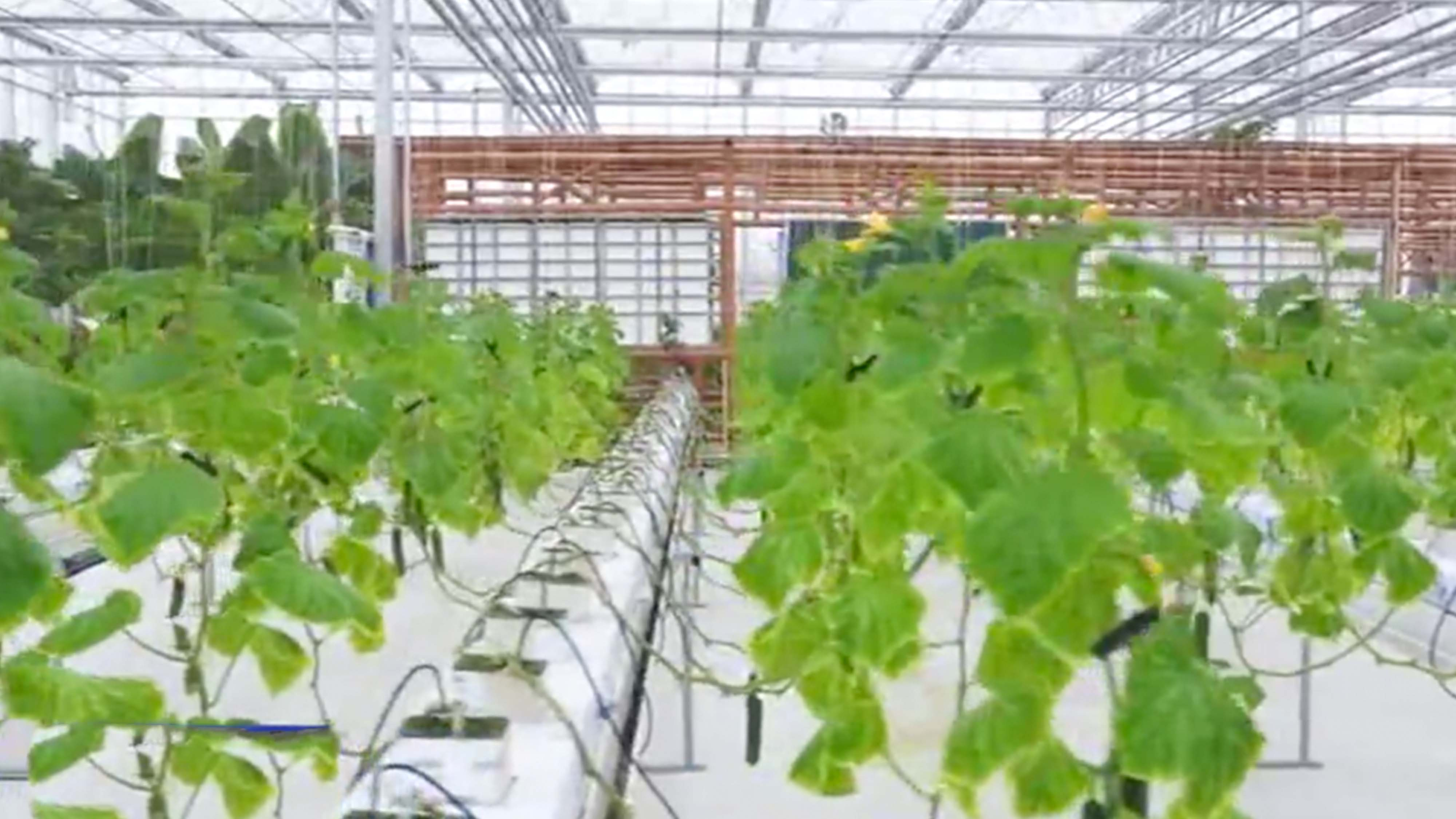
Agri
20:13, 30-Nov-2018
Technological innovation reshaping agriculture in China
Updated
20:15, 03-Dec-2018
By Shao Cong
02:20

A sustainable food future - that's one of the hot topics at this year's G20 summit. China has done a lot in water conservancy, as technology and innovation are reshaping the agriculture industry in the country.
We all know that crops can't grow without water, so saving water is the goal for farmers all over the world.
In the past, irrigation mainly focused on providing enough water. But now, irrigation is more like an art of how to efficiently use every drop of water.

Agricultural production doesn't need to rely on natural weather anymore. /CGTN Photo
Agricultural production doesn't need to rely on natural weather anymore. /CGTN Photo
Unbalanced distribution and insufficient water resources are the major obstacles that stand in the way of China's agricultural development today. But the coming of irrigation tubes helps solve the problems.
The irrigation tubes enable pumped or pressurized water to drip slowly and conserve the water by reducing evaporation and deep drainage.
Considering the various growth habits of different crops, the irrigation tubes are either allotted from above the soil surface or buried below the surface.
All these different methods aim to achieve the same thing: to provide the exact amount of water that crops need.
We have figured out how to adjust water, fertilizer, light, and heat. Through an irrigation system and an intelligent software platform, we can control these unstable elements. Agricultural production doesn't need to rely on natural weather anymore.

Soil temperature and humidity monitor. /CGTN Photo
Soil temperature and humidity monitor. /CGTN Photo
In China, drip systems often mix liquid fertilizer with the irrigation water - called fertigation. It saves not only water and fertilizer but also labor costs.
A more advanced way is combined with the Internet of Things (IoT). By detecting water, the water circulation system ensures an appropriate fertilizer amount in water coming in. A few clicks on the mobile app, and you'll get automatic fertigation any time you want.
With increasing research and development funding, technology has flourished in China's agricultural sector. The contribution rate of scientific and technological progress rose to 57.5 percent in 2017. Annual grain output has stabilized at 600 million metric tons.
For China, it's just the beginning.

SITEMAP
Copyright © 2018 CGTN. Beijing ICP prepared NO.16065310-3
Copyright © 2018 CGTN. Beijing ICP prepared NO.16065310-3